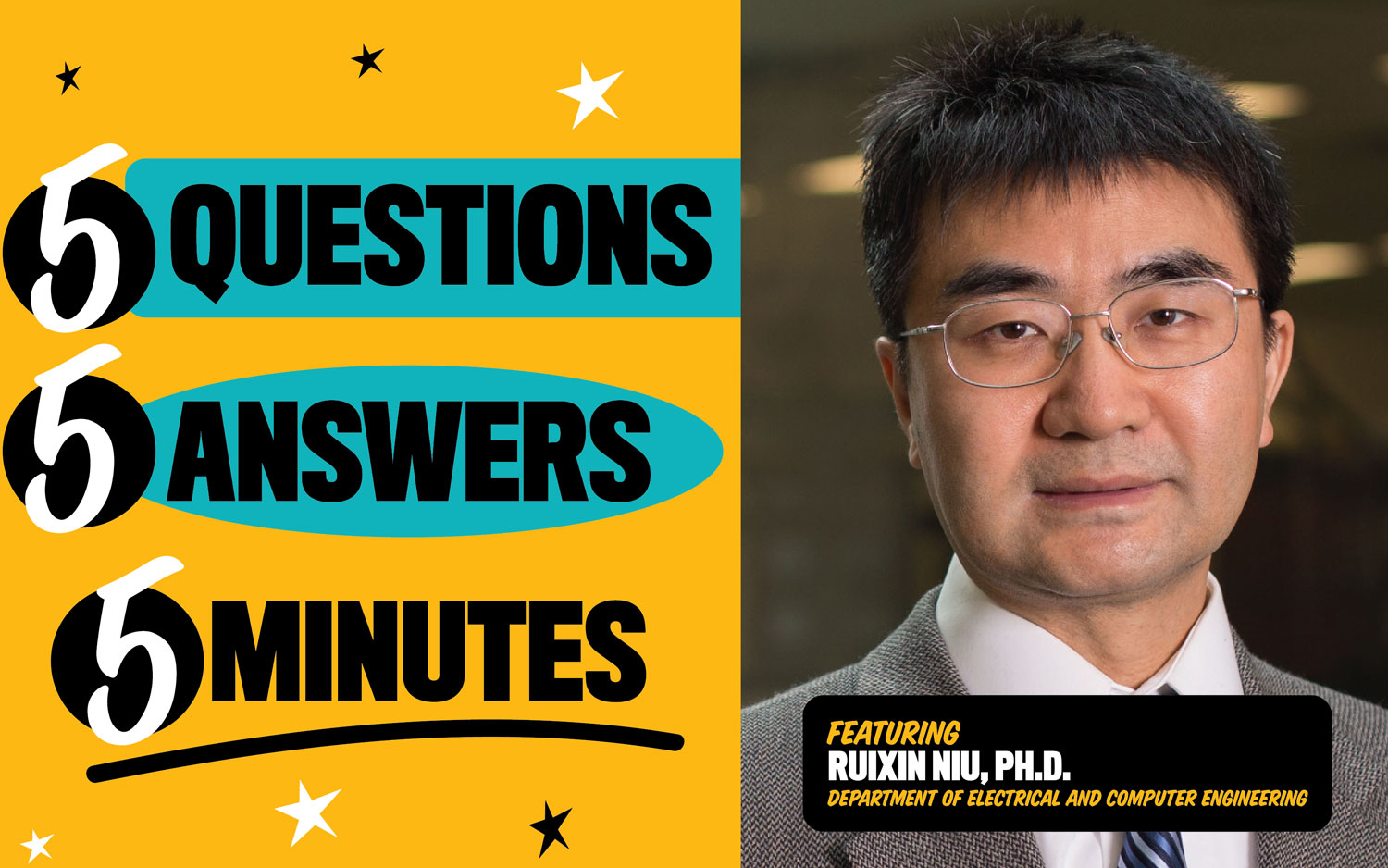Ruixin Niu, Ph.D., is an associate professor in the Department of Electrical and Computer Engineering. He specializes in signal processing and data fusion.
What are you working on right now?
My main research focuses on signal processing and multi-source data fusion for better object detection, tracking and classification. It’s beneficial to fuse information from multiple sensors because they often provide complementary information. For example, visible light cameras provide a lot of information and details about objects, but they only work under favorable light conditions. On the other hand, radar sensors work under all illumination conditions. The better we can combine information from both types of sensors, the more information we can obtain about objects in all environmental conditions.
What are the practical benefits of improving multi-source information fusion?
This research has many practical applications including surveillance, security, traffic monitoring, video communication and robot vision and animation. For example, improving an autonomous car’s ability to fuse information from multiple sensors helps the vehicle gain better situational awareness and improve the safety, comfort and driving experience for the driver. If surrounding vehicles’ or pedestrians’ positions and velocity can be accurately estimated, control actions such as car braking can be taken autonomously in a timely manner to avoid accidents.
What’s the biggest challenge in trying to fuse data from multiple sensors?
Different sensors are asynchronous and have different sampling rates, so it’s difficult to get a physical model to link the sensors’ data to the object's identity or state. To solve this, we are trying to apply sophisticated signal processing/machine learning techniques to fuse information from sensors with different modalities. We are combining traditional tracking algorithms with new deep learning neural networks that have multiple layers for detection/tracking/classification of objects. This eliminates the need for a physical model of the data.
What attracted you to this branch of engineering?
Ever since I was a child, I have always been fascinated with mathematics. At the same time, I am deeply interested in solving everyday practical problems. So engineering — or more particularly, signal processing — provides a unique opportunity for me to do both at the same time. That is, I can apply some of the mathematical/statistical approaches I’ve learned over the years to solve practical problems such as multi-sensor information fusion for better perception and understating of the surrounding environment.
Who else in the VCU community has been involved in this project?
In my research group, I have been working with a post-doc researcher, several graduate students and several undergraduate students. I really enjoy working and interacting with them on the information fusion projects. Not only have they gained knowledge and insights from me, but I myself am also motivated to learn new concepts and techniques in my interactions with them, such as our discussions of research problems in group and individual meetings.
Fun Fact: I enjoy watching movies and once played a supporting role in a student film.
